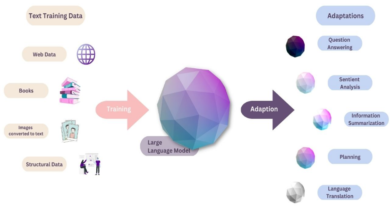Unlocking the Power of Customized SMAs: A Comprehensive Guide

Separately Managed Accounts, also known as SMAs, have become a popular investment tool for affluent investors wishing to have better control of their portfolios. Unlike mutual funds, these accounts offer individual ownership of securities, which means investors can enjoy a higher management level, similar to institutional clients. This level of customization goes beyond asset allocation and extends to monitoring and adjusting for tax liabilities, which in turn enhances the potential for optimized net returns. For those considering a personalized approach to portfolio management, it’s essential to understand the foundational principles behind SMAs as the first step.
The Benefits of Customized SMAs
Customization is the bedrock upon which the value proposition of SMAs is built. The concept of customized SMAs thrusts personalization to the forefront, wherein investment strategies are meticulously tailored to align with an investor’s unique financial circumstances and goals. For investors, the personalized nature of SMAs paves the way for investment strategies that are finely tuned to individual risk tolerances, investment horizons, and specific financial objectives. These targeted strategies can lead to more effective asset growth over time without the one-size-fits-all constraints of collective investment vehicles. Moreover, personalized SMAs offer a transparent window into investment selections, fostering a deeper understanding and connection between investors and their financial assets. This transparency also extends to costs, where investors may benefit from fee structures that are often more directly linked to the services provided, as opposed to the layers of fees that can obscure the actual cost of mutual funds and other pooled investment solutions.
Understanding Tax Management within SMAs
Efficient tax management is where customized SMAs truly demonstrate their merit. Savvy investors and their advisors can wield tax optimization strategies like a finely honed instrument within the context of an SMA. One such strategy is tax-loss harvesting, which involves deliberately selling investments at a loss to offset capital gains in other portfolio parts. These strategic moves minimize the investor’s immediate tax burden and can contribute to a more favorable tax landscape in the future. The dynamic nature of financial markets necessitates a flexible and proactive approach to tax management, a task to which tailored SMAs are well suited. With meticulously curated investments, SMAs allow for more granular control of buy and sell decisions, giving tax management the attention and precision it deserves.
The Investor’s Role in SMA Customization
Within the framework of SMAs, the investor’s voice carries significant weight. Active engagement in formulating investment objectives and risk parameters is crucial, serving as the guiding principle for managing the SMA. By sharing a detailed vision and expectations with their advisors, investors catalyze the creation of a portfolio that accurately reflects their intentions. This clear line of communication is essential, allowing advisors to customize strategies while adapting to any changes in the investor’s situation or shifts in the broader economic environment. This collaborative dynamic between investor and advisor contributes to the overarching objective of a truly personalized investment experience, which is characteristic of SMAs.
The Financial Advisor’s Perspective
For financial advisors, customized SMAs allow them to differentiate their service offerings and add tangible value to client relationships. Crafting a portfolio from the ground up demands a keen understanding of the client’s specific desires and the nuances of the broader market. The advisor’s role morphs into that of a strategist and confidant, actively managing the SMA with regular portfolio rebalancing and fine-tuning to reflect changes in the investment climate or the client’s financial circumstances. The agility and responsiveness that customized SMAs require can elevate the advisor’s role from a money manager to a trusted partner in the investor’s long-term wealth journey.
Integrating SMAs in Your Overall Financial Plan
A holistic view of one’s financial world is essential—integrating SMAs into the investor’s comprehensive economic plan illustrates this need. SMAs should complement other investment strategies and vehicles, playing their part in a diversified and balanced portfolio. This careful integration ensures that an investor’s assets work in tandem toward achieving long-term financial ambitions. Bridging the gap between various investment products and strategies, customized SMAs can assume a vital role within the constellation of retirement accounts, trust funds, and other wealth-building instruments, consistently aligning with overarching financial goals and values.
Technology and Tools for SMA Optimization
In the age of information technology, the potential for personalization within SMAs has expanded dramatically. Investment advisors now have tools to analyze vast quantities of data to make informed decisions swiftly. According to a study, contemporary portfolio management software offers capabilities ranging from automatic rebalancing to predictive analytics, enhancing the strategic management of SMEs. These technologies allow for more accurate tailoring of investments to the unique profiles of clients, ensuring that SMAs not only meet but exceed the expectations of the individual investor. In essence, technology is the enabler for the nuanced customization that underpins the effectiveness of SMAs.
The Downsides and Risks of Customized SMAs
The tailored approach of SMAs does not render them immune to risks and downsides. Potential drawbacks include the costs associated with personalized management services, which may be higher than passive investments or mutual funds. Also, investors must be aware of liquidity risks as some custom strategies may include less liquid assets to achieve specific investment objectives. In addition, while customization can provide tailored solutions, there remains the risk that particular investment choices may perform differently than expected, leading to underperformance relative to benchmarks or peer groups. Investors must weigh risks and benefits before incorporating SMAs into their strategy.
Choosing the Right SMA Provider
Concluding the SMA journey is the crucial step of selecting the right provider. This decision should be made with care, considering the provider’s reputation, investment philosophy, and the platform’s robustness. Investors should seek providers offering transparent fees, extensive asset allocation, reporting tools, and exceptional client service. A thorough evaluation process, which might include studying performance track records and reading client testimonials, is necessary to build a lasting and effective relationship with an SMA provider capable of meeting the specialized needs of individuals yearning for refined and responsive investment management.



